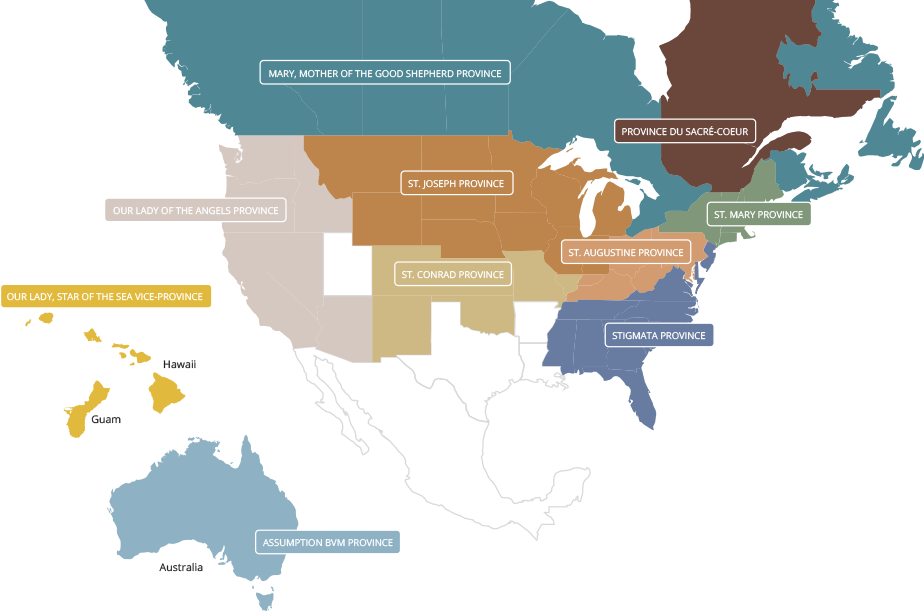St. Francis of Assisi
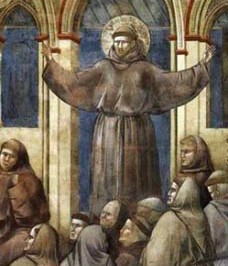 More than 800 years after he was born, St. Francis remains one of the most popular personalities in history. Well known for his care for animals, an advocate for peace, and his simple life-style, St. Francis, above all, gave himself completely to God because he realized God's total love for him. His dream to achieve fame and glory in battle was transformed into a desire to radically follow his Savior, our Lord Jesus Christ. He stood naked before the bishop, kissed the leper, opened the Book of the Gospels, rebuilt the tiny church of San Damiano, contemplated the Crucified Christ, gazed upon the creche at Greccio, sang in the streets of Assisi, met with the Muslim sultan, pledged obedience to the Pope, received the sacred stigmata, prayed at all times, immersed himself among the poor . . . because he declared with all his soul, strength, heart and mind, "My God and my All!"
More than 800 years after he was born, St. Francis remains one of the most popular personalities in history. Well known for his care for animals, an advocate for peace, and his simple life-style, St. Francis, above all, gave himself completely to God because he realized God's total love for him. His dream to achieve fame and glory in battle was transformed into a desire to radically follow his Savior, our Lord Jesus Christ. He stood naked before the bishop, kissed the leper, opened the Book of the Gospels, rebuilt the tiny church of San Damiano, contemplated the Crucified Christ, gazed upon the creche at Greccio, sang in the streets of Assisi, met with the Muslim sultan, pledged obedience to the Pope, received the sacred stigmata, prayed at all times, immersed himself among the poor . . . because he declared with all his soul, strength, heart and mind, "My God and my All!"
 The Capuchin Reform
The Capuchin Reform

Three centuries after St. Francis, a number of Franciscan friars wanted to live as the founder envisioned; they wanted to observe the original Rule and ideals. Devoting themselves to prayer, penance and preaching, the friars also heroically served the poor, sick and dying. In 1528 Pope Clement VII gave them permission to form a new community of Franciscan friars. They soon became known as "Capuchins" because many Italian children called them "cappuccini" for the large hoods of their habits. Overcoming opposition from some of their former superiors and enduring great trials, the Capuchins soon won the hearts of ordinary people. "They were alive with a spiritual life which was in touch with the fundamental needs of the human spirit of their time." The same historian observes that the Capuchins began as a "revolt against the secularism and conventionalism" which permeated society and even the Church. The Capuchins recaptured the fervor and original vision of St. Francis. These friars and those who followed had a reputation for austerity, holiness and a solidarity with the poor and common people. Today there are 11,000 friars world-wide, with rapid growth in Africa, Asia and South America, and a resurgence in the United States.
Capuchins in the NAPPC
The North American & Pacific Capuchin Conference
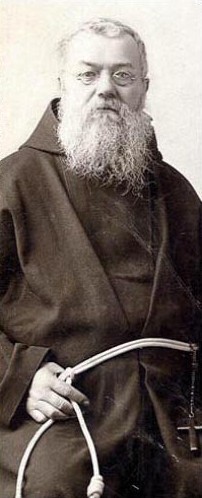
Province of St. Augustine
Three friars from Bavaria arrived in Pittsburgh in 1873: Father Hyacinth Epp (photo), Brother Eleutherius Guggenbichler, and Father Matthew Hau. Two years later a group of Westphalian (Germany) friars, headed by Father Anthony Schuermann, set up another foundation of Capuchin friars in Cumberland, MD. In 1882 the two groups were united in one Province, to be known as the Pennsylvania Province or the Province of St. Augustine, so named for the first parish served by the friars in Pittsburgh. Even before becoming an independent jurisdiction, the friars had established friaries from Maryland to Kansas. Because of their German roots, friars were often called upon to serve in communities of newly arrived immigrants from Germany. In 1977 the Province was divided, thus establishing the Province of Mid America, including Missouri, Kansas and Colorado. Today friars of the Province of St. Augustine are serving in the District of Columbia, Ohio, Maryland, Pennsylvania, West Virginia, Puerto Rico and Papua New Guinea.
 Capuchin Saints
Capuchin Saints

There are more than 70 canonized and beatified Capuchin friars and sisters. Of course, we count St. Francis our founder and Seraphic Father. Once the Capuchin Reform got underway, saints and blesseds formed a long procession. One of the earliest saints was Brother Felix of Cantalice, who won the hearts of the people of Rome as a beggar and provider for the poor. There are mystics and martyrs, including Brother Fidelis of Sigmaringen who was killed during the Protestant reformation. Brother Lawrence of Brindisi was proclaimed a Doctor of the Church for his powerful teaching and preaching. Many of the saints were lay friars who took on the daily tasks of running a friary, including porters, like Brother Conrad of Parzham (he undoubtedly waved good-bye to the friar pioneers who founded this province). Most of the friar saints and blesseds came from humble backgrounds, often very poor and accustommed to hard manual labor. But others were of more curious backgrounds, like Brother Bernard of Corleone, who was on the winning side of a sword dual and sought Capuchin life in repentance. One of the most recently canonized saints is the famous Padre Pio of Pietrelcina. More Capuchin friars are in line to be canonized and beatified.
 Prayer
Prayer
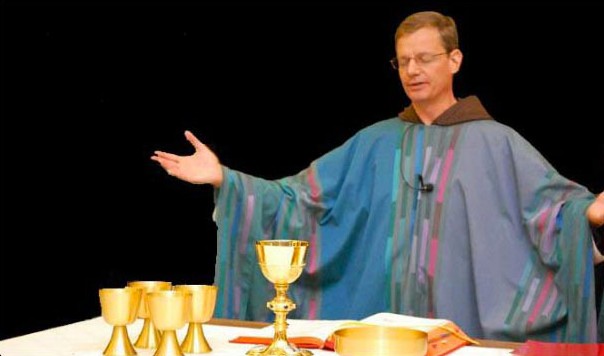
Prayer of the heart leads us to an intimate experience of God, and our hearts cannot but break into adoration, thanksgiving, admiration and praise. We should have the greatest respect for the mystery of the Eucharist and the Divine Office which Saint Francis wished to shape the entire life of the brotherhood. Let us preserve and promote that contemplative spirit that shines in the life of Francis. Interior prayer is a charism of our Capuchin fraternity and is the seed of genuine renewal." Capuchin Constitutions, Chapter 3
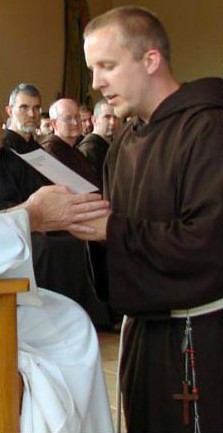
 Vows
Vows
Christ proposes the envangelical counsels to every disciple. The perfection of charity, to which all are called, entails for those who freely follow the call to religious life, the obligation of practicing chastity in celibacy for the sake of the Kingdom, poverty and obedience. This is one way of experiencing a more intimate consecration, rooted in Baptism and dedicated totally to God to follow Christ more nearly and to give themselves to God who is love.
Brotherhood
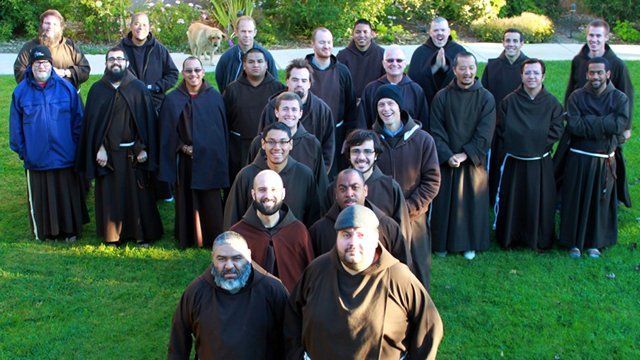
"Inspired by God, Saint Francis initiated a Gospel form of life that he called a brotherhood according to the example of the life of Christ and his disciples. We who profess this form of life truy constitute an Order of brothers. United by faith in God our Father and nourished at the table of the Divine Word and the Eucharist, we love one another that the world may know we are disciples of Jesus Christ. Wherever we may be gathered in the name of Jesus, let us be of one heart and one mind, always striving to advance to greater perfection." Capuchin Constitutions, Chapter 6


